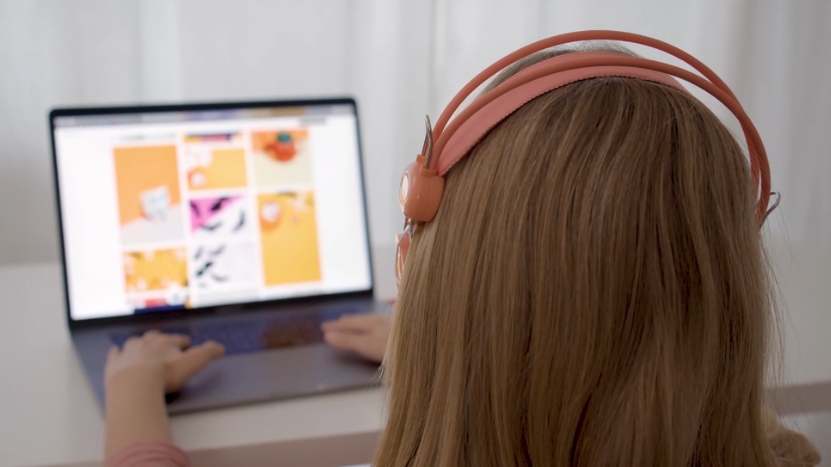
Share Post:
Teacher burnout refers to a chronic state of physical and emotional exhaustion, often accompanied by feelings of ineffectiveness and detachment.
Across education systems, burnout rates have climbed steadily, impacting not just individual well-being but also student learning outcomes and school performance. Stress in teaching environments can ripple outward, weakening classroom engagement and reducing instructional quality.
When educators suffer, entire learning communities feel the effects. Addressing teacher burnout isn’t optional; it’s urgent.
Table of Contents
ToggleKey Causes of Teacher Burnout
Teacher burnout rarely comes down to a single factor. Instead, it results from a relentless combination of pressures that wear down:
- Motivation
- Energy
- Emotional resilience
Many educators face a mix of physical exhaustion, emotional fatigue, and professional dissatisfaction daily.
To better highlight how burnout takes hold, several core causes can be broken down into focused categories.
Excessive Workload and Time Pressure

Work rarely ends when the school bell rings. Teachers often spend their evenings grading papers, preparing lessons, and responding to emails.
Weekends are absorbed by curriculum planning or professional development. Even with hours of work beyond the school day, many still feel like they’re falling behind.
In comparison to international teaching models, U.S. educators typically receive far less designated prep time and more instructional hours.
The result is a profession where fatigue builds quickly and rest is hard to come by.
- Long hours without adequate recovery
- Heavy administrative burdens added to instructional duties
- Minimal prep time compared to international teaching models
Inadequate Resources and Funding
Teaching without the proper tools makes even the best educators feel powerless. Many classrooms lack up-to-date materials or basic supplies.
Technology can be outdated or nonexistent. Teachers often fill the gap with their own money, purchasing items that schools can’t or won’t provide.
Large class sizes only amplify the challenge, limiting one-on-one attention and increasing stress. Add to that stagnant salaries and mounting financial pressures, and the emotional cost becomes difficult to carry.
- Underfunded schools with limited teaching tools
- High student loads that demand more energy and attention
- Financial stress due to inadequate pay or out-of-pocket expenses
Emotional Demands and Secondary Trauma

Teachers support far more than academic growth. They often become emotional anchors for students dealing with poverty, abuse, neglect, and mental health struggles.
Listening to stories of trauma, witnessing emotional breakdowns, and trying to stabilize a classroom under these conditions take a serious toll.
Without proper resources or counseling support, educators may experience secondary trauma, a condition that mimics PTSD brought on by prolonged exposure to others’ suffering.
- Constant emotional labor and caretaker roles
- Secondary trauma and compassion fatigue
- Navigating the needs of students dealing with significant personal hardships
Lack of Autonomy and Bureaucratic Constraints
Standardized testing pressures dominate many school cultures. Teachers find themselves teaching to the test rather than nurturing curiosity or creativity.
Curricula become dictated by district mandates, and professional judgment takes a backseat to rigid frameworks.
With limited influence over decisions that directly impact their work, many educators feel undervalued and powerless. Enthusiasm wanes when there’s no space to innovate or adapt lessons based on what students truly need.
- Pressure to meet test metrics at the expense of meaningful learning
- Lack of influence in curriculum design and policy decisions
- Erosion of professional autonomy and creativity
Isolation and Lack of Support

Teaching can be socially isolating. Classrooms operate as silos, and collaboration often becomes a luxury rather than a norm. Without structured support systems or collegial dialogue, problems grow silently.
In schools with poor leadership, micromanagement or neglect replaces mentorship. Toxic work cultures breed disengagement, leaving teachers unsupported in moments of personal and professional strain.
- Little collaboration or shared problem-solving
- Weak communication between staff and leadership
- School environments that neglect teacher well-being
Disproportionate Impact on High-Poverty Schools
Teachers working in low-income districts face steeper challenges—scarce resources, overcrowded classrooms, elevated behavioral concerns, and deteriorating facilities.
These environments can feel like battlegrounds, where every day demands more than what any one teacher can give.
High attrition rates in these schools disrupt continuity and make systemic progress difficult. As experienced educators burn out and leave, students lose mentors and consistency, which widens educational disparities.
- Higher turnover among teachers in under-resourced schools
- More complex classroom dynamics with fewer supports
- Adverse effects on student achievement and stability
Warning Signs of Burnout

Burnout rarely arrives all at once. It creeps in gradually, often masked by dedication and resilience. Teachers may ignore the early warnings, assuming fatigue is just part of the job.
Over time, small signals become major disruptions, affecting not only personal health but also professional performance. Recognizing the symptoms early can help educators take action before teacher burnout takes control.
Emotional and Physical Exhaustion
Persistent tiredness becomes a daily reality. Even after a full night’s sleep, energy doesn’t return.
Physical health suffers, with headaches, muscle tension, and colds becoming common. Emotional bandwidth shrinks. Teachers feel emotionally spent before the first bell rings.
Carrying the emotional needs of others without having time to decompress leads to total depletion.
- Insomnia and constant tiredness
- Frequent illness or physical tension
- Feeling emotionally “numb” or drained by minor interactions
- Lack of motivation even after rest
- Loss of patience with students and colleagues
Detachment and Cynicism
Joy fades. Tasks that once sparked passion now feel like chores. Teachers may adopt sarcasm as a shield or become increasingly critical of:
- Students
- Parents
- School systems
Detachment serves as self-preservation but slowly builds walls between teachers and their purpose.
Cynicism reflects a belief that nothing will improve. Motivation turns into resignation.
- Loss of excitement for teaching
- Negative attitude toward students, leadership, or reforms
- Emotional disconnect during classroom interactions
- Frequent expressions of doubt or frustration
- Withdrawing emotionally even while physically present
Reduced Efficacy
Confidence begins to erode. Even experienced educators question their competence. Daily successes go unnoticed, while minor setbacks feel like major failures. Passion gets replaced by performance anxiety or a numb routine.
Teachers start asking themselves if their efforts make a difference at all.
- Feeling ineffective or unappreciated
- Struggling to meet daily expectations
- Apathetic attitude toward student progress
- Avoiding challenges or new teaching strategies
- Focusing only on survival rather than growth
Withdrawal from Professional Community
Connections fade. Teachers pull back socially and professionally, avoiding lunchrooms, meetings, and school events.
Once-valued conversations now feel draining. Collaboration disappears, and isolation becomes the default setting.
- Avoidance of social or professional interaction
- Missing school events or collaboration opportunities
- Reduced participation in staff development
- Lack of input during meetings or discussions
- Feeling isolated even among peers
Decline in Classroom Performance

Burnout spills into instructional quality. Lessons lose their spark, classroom management weakens, and student engagement drops.
Teachers deliver material without passion or innovation. As teacher burnout grows, performance suffers in ways that affect student learning.
Even strong teachers find themselves going through the motions.
- Poor lesson delivery or pacing
- Increased classroom disruptions
- Lack of enthusiasm
- Forgetfulness or disorganization
- Struggling to adapt to student needs
Loss of Passion and Inspiration
At the heart of teacher burnout is disconnection from purpose. Teachers begin to question why they entered the profession.
The deeper motivation that once fueled them feels distant. Long-term career plans may come into question. Hope and inspiration give way to doubt and regret.
- Wondering if teaching is still the right path
- Feeling disconnected from personal values
- Difficulty envisioning a future in the classroom
- Comparing current self to former self
- Loss of belief in positive change
The Bottom Line
Teacher burnout can be prevented when teachers recognize the early signs and commit to care. Awareness, boundaries, rest, and support form a powerful defense.
Teaching doesn’t have to feel like a never-ending grind. With the right strategies, educators can rediscover energy, purpose, and even joy in their work.
Burnout isn’t the end of a career, it can mark a powerful turning point toward something healthier.
Related Posts:
- 5 Ways Teacher Education Programs Are Adapting to…
- The Tech Behind Vape Detectors and How They're…
- 7 Best Mind Mapping Tools for Teachers and Students
- What is Bloom’s Taxonomy and How Does It Apply to Teaching?
- 9 Key Benefits of Hybrid Learning for Students and Educators
- Why Game-Based Learning Is Key to Student Engagement…












